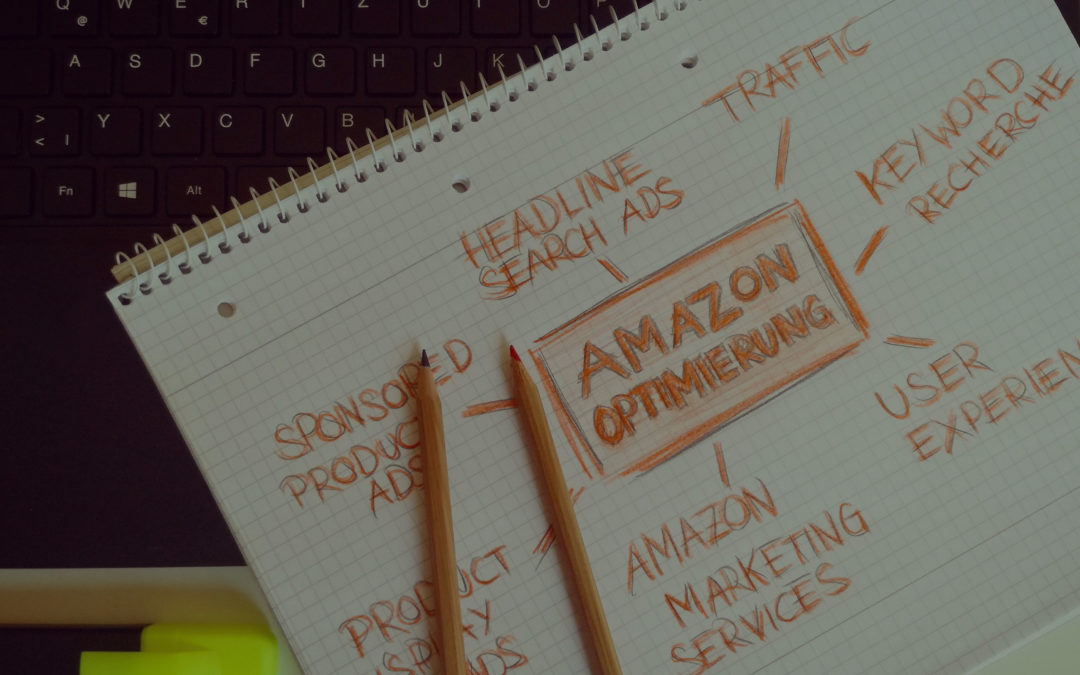
by Redstage Team | Apr 23, 2012 | Uncategorized

The Internet has long been held as one of the most innovative and influential modes of communication in history. Throughout the years of its existence, it has grown exponentially as a mode of communication, entertainment, and marketplace exchange. In fact, it now connects millions of people every minute of every day in a web of amusement, information, and commercial trade. However, this rapid growth has been accompanied not only by privacy and security concerns, but also those involved with the quality and actual delivery of goods involved in these eCommerce transactions.
It is sad to say that although the internet has established itself as a legitimate remote purchasing method along with such mediums as telephone and mail-order shopping, there is still a large amount of consumer perceived risk whenever they shop online.
Traditionally, these risks have often been managed by employing risk relievers. These include such concepts as payment security, cheaper price, and exchange options. However, there are other newer and better ways to manage consumer perceived risk in the online market place.
What is a Google Trusted Store?
The Internet giant, Google, announced its take on how to lessen consumer perceived risk in online shopping by introducing its new program – Google Trusted Stores. The program is designed to assist in the growth and development of eCommerce by endorsing exemplary online merchants that offer the most reliable online shopping experience, and best customer service.
The program was introduced back in October of 2011, and has since then admitted numerous eCommerce merchants into its ranks. The participating merchants are required to not only comply with Google’s strict standards on shipping, and customer service, but are also compelled to share data regarding these two factors with the internet giant.

These select merchants will be allowed to show off Google’s badge of trust on their website in order to take advantage of the positive reputation the company has long developed. The badge will serve as a testament to the company’s commendable ability to serve its customers well.
How it helps consumers
Aside from the obvious advantages to having a badge on a website the customer can trust, Google is also backing their claim on the website with a free $1000 lifetime purchase protection for selected products the merchant sells.
The purchase protection program also guarantees consumers the assistance of Google whenever a purchase goes awry, and a dispute arises between them and the merchant. Moreover, this dispute must be reported within 60 days after the purchase is made. More detailed information on the dispute resolution process can be found on their website.
How it helps eCommerce sellers
Despite the fact that internet shopping has been gaining a little more trust from consumers nowadays, the fact still remains that majority of people surfing the internet have little to no experience in the online marketplace. In fact, a recent study has even shown that past experience in online purchases does not necessarily translate into the consumer perceiving the Internet as a less risky shopping channel. Now, merchants do have the option to just wait for these people to change their opinions through social forces and word of mouth marketing, but the fact is that this natural process takes up too much time – time that translates to dollars in opportunity cost!
A more cost and time-effective approach would be to take an active stand in lowering the consumer’s perceived risk in online purchases.
E-commerce merchants can now assist consumers that are worried about shopping at unfamiliar online stores, and are nervous about the reliability of shipping and dispute resolution by applying for certification as a Google Trusted Store. Less perceived risk means that the consumer is more likely to make a purchase at the store. Consequently, more purchases means more profit and more positive consumer reviews, which in turn means less perceived risk from other potential consumers!
Moreover, studies show that the success of trust marks and confidence-boosting badges largely rely on the entity backing the given badge. Considering that Google has made Buyology’s list of Top 10 Most Desirable Brands and Forbes’ Top 100 Consumer Brands, it’s safe to say that the weight accorded by Google’s badge is more significant than most.

The future of Google Trusted Sites
It’s hard to say whether or not Google Trusted Sites will play a major role in the future of eCommerce. There isn’t really much hard evidence to support either conclusion. Nevertheless, it’s a shared belief here at Redstage that this is one very valuable trust logo to have on your site.

by Redstage Team | Apr 19, 2012 | Uncategorized
Unless you’ve been living under a rock for the last few years, you have probably already heard about the new sensation that’s been spreading across the internet like wildfire – Pinterest.
What is Pinterest?
Pinterest is a new social network whose main feature is its ability to act like a digital scrapbook, bulletin board, or wish list. While there are several other websites that offer extensive image sharing capabilities, Pinterest has developed this as its main competitive edge against other more popular social networks. In fact, it has been so successful in carving out a niche for itself that in two short years after launching its private beta, it has skyrocketed. It is now ranked among the top 10 social sites, and is estimated to be worth around 500 million USD.
The company was conceived a while back in 2009. It officially launched its invitation-only beta in 2010. Right from the start, Pinterest’s client base has always been mostly composed of women. Its first frequent visitors were mostly interested in the recipes and stylish home decors they found on the site. This core group of people then spread the word to their friends, who in turn told theirs, and so on. Pinterest owes its marketing success to the quality of its content and the power of referrals. On July 2011, only 13 months after its launch, the company had already its 1 millionth unique visitor. This rapid growth has often given it the reputation of being the fastest growing internet site in history. In truth however, it is only second to yet another internet sensation – formspring.
Fast-forward 7 months later to February 2012. The company now has 17.8 million unique visitors in the US alone! This means that during these 7 months, more than 16 million people have visited the website at least once – an absolutely amazing feat. What’s more, Pinterest is still growing – fast. In the last month alone, the website has attracted roughly 52% more unique visitors than the month before that. This was been confirmed by the findings of comScore in its most recent report.

Why should you consider marketing at Pinterest?
Two words: referral traffic – lots of it. In fact, by February 2012 Pinterest surpassed Google+, Youtube, and Linkedln’s combined referral traffic. In the next month, Shareaholic, an online sharing tool, discovered that Pinterest now drives more referral traffic than Twitter. Yes, that’s right. Pinterest now brings in more traffic that Twitter – the very popular online sharing network that internet-aficionados rely on to get an accurate real-time flow of information.

Moreover, a very recent study by RJ Metrics has suggested that Pinterest users are starting to develop a more mass-market orientation.
When it started, Pinterest users were mostly composed of homemakers, and fashion and style enthusiasts. However, there are only so many people in these niche markets. As the site ascends into the ranks of the internet’s most prominent sites, its users’ interests will get more and more diverse. Topics everyone can relate to are starting to become more and more popular on Pinterest boards. Food, the 4th most popular category at the moment, is steadily gaining more and more interest from the users. In fact, food is the most re-pinned category on Pinterest to date. It generates roughly 50% more re-pins than the fashion and style category, the second most re-pinned category.



by Adam M. | Mar 28, 2012 | Uncategorized
You’d be surprised how many conversations I have with top executives and eCommerce managers who have major misconceptions about SEO. The biggest problem is that I often find these myths guiding both decisions and budgets. Let’s look at some of the most common that I hear.
First, we need some SEO basics to set the stage. SEO is broken into two parts:
1. On-Page SEO – all the stuff that you can do to your actual website (title tags, h1 tags, urls, content, site speed, etc etc)
2. Off-Page SEO – all the stuff you can do that is NOT part of your site (link building, link wheel, etc)
Here’s an important distinction to kick us off. On-Page SEO can only make you ABLE to rank while, but does not mean you WILL rank well. Off-Page SEO is what actually gives you more Google Juice. Keep in mind, that if you’re sending the Juice to an un-optimized page, you won’t gain any traction either, since those pages aren’t able to rank well.
Now, to the myths!
Let’s start with a big one…
SEO is a one-time activity that happens during site development.
No no no! This one really makes me pull my hair out. On-Page SEO starts during site development. Real SEO is done as an ongoing campaign for both on-page and off-page. An SEO campaign actually starts with target keyword analysis.
Good Content / More Content leads to better rankings
Nope. It’s on-page SEO. It just makes you better ABLE to rank for keywords. It also helps allow you to rank more organically for long tail and natural keywords. Don’t get me wrong, it’s still a hugely important part of your strategy, but it can’t do much alone.
Duplicate Content Penalty
There’s no “Penalty”. It’s really just that Dupe content pages get dropped. So, it kind of looks like a penalty. But especially in eCommerce, stop being so scared of dupe content created by your filters. You CAN get more value if google knows that they’re all the same page, so use Google appropriate tagging (pagination and canonical).
Meta keywords / meta description
Useless (almost). No search engines use them anymore for rankings. Power Tip: some SEs will pick up the Meta Description (sometimes!) as their description for the page, so you can use meta description to possibly help click through rate. But definitely not rankings.
Tiny links at bottom of page
Google knows that links that are tiny or the same color as backgrounds are trying to fake them out. Don’t use them. I have successfully used footer links to boost pages on other sites and internal pages, but make sure it’s part of the actual site, not hidden at the bottom.
Hyphenated domains are better
Nope. Google can read words inside the url. Google also thinks that too many dashes in your url is an indication of a spam domain
Adwords campaigns improve SEO
Most are convinced that this isn’t the case. When you create an Adwords campaign, you usually do tweaks to improve your quality score. Those tweaks are probably what is helping SEO, not the campaign itself.
XML Sitemaps boost rankings
Not true. Again, on-page SEO only. Yeah, they’ll help some of your pages get indexed faster, but will do nothing for rankings.
Title attributes are useful in img and href tags
They’re not, as far as we know. Don’t waste your time.
Google can’t grab external CSS files
Yes, it can, and it’s looking through those too for hidden tricks.
Flash elements ruin SEO
I’m not really a fan of flash, and, as long as your site isn’t entirely flash, some flash elements are fine. Google can even read text in flash nowadays if done properly.
H1 tags are the holy grail of on-page SEO
SEOMoz says differently (through an actual study). But they can’t hurt, so use them both for your readers and for Google. Just don’t rely on them. Regular bold/larger text works just as well.
Validating your HTML will make Google read it better.
Google reads it just fine…
Buying Links
Google figures this out quickly now. It’s a huge waste of money.
Inclusion of meta robots tag (index,follow)
Not useful. Unless you tell an SE NOT to follow you, it will.
Google doesn’t follow JavaScript links
It’s not perfect at it, but it’s pretty good. That’s not a good way to keep from bleeding Google Juice.
Your urls need to end in .html (or similar) to be friendly
I don’t think that’s ever mattered. Keywords in urls are good. End of url doesn’t matter.
Google can’t search or see search results
Not sure when it started, but it sure can see them now. If you’re a Magento user, you’ll probably notice that the SE spiders have totally screwed up your “top searches.”
Using your keyword as anchor text for your “Home” links
Meaning, if you’re trying to rank your homepage for “cheapest widgets” then you would change all of your “Home” links to read “cheapest widgets.” I used to do this all the time, actually, especially in the footer. That is until SEOMoz did a study and debunked it.

by Adam M. | Mar 2, 2012 | Uncategorized
Technology advancements have changed the way we manage our “related products” in eCommerce. Let’s take a look at the way that some of the biggest players are maximising conversion rates and increasing total order values through cross selling.
Today we’re going to look at Customer Behavior Based Cross Selling (I’ve also seen it called algorithmic cross-selling). In a nutshell, these cross selling modules comb through actual shopping data (e.g. product view patterns or order history) to display cross sells that are the most relevant to your customer segments, automatically.
Here are the 4 most common custom behavior based cross sell implementations:
- Who Viewed This Also Viewed
- Who Bought This Also Bought
- Frequently Bought Together
- People Who Viewed This Ultimately Bought
The titles of them are fairly self explanatory, so I won’t put you to sleep explaining each one. If you have questions, just drop us a comment.
Why is this type of cross selling so successful?
1. Social Proof. Briefly, social proof is the concept that if it’s good enough for others, it’s good enough for me. Customer behavior based upsells resonate with customers better because they feel like the product recommendations are coming from fellow customers. To quote my freshman year Small Business Administration professor, “It’s not about what you say about your products, but what your customers say.” Same idea.
2. Automation. Especially if you have a large catalog, it would be relatively impossible to keep up with manually assigning cross sells for each of your products.
3. You’re not a customer. You know too much about your business and about your industry. So it’s very difficult to get inside your customers’ heads about what additional products they would consider. Actual shopping behavior is a much better metric to get the right products in front of your customer segments.
Some companies, like Prediggo, believe that if you’re blindly implementing customer behavior based cross-selling, you’re making a grave mistake!
I had the pleasure of chatting with Andrew from Prediggo (www.prediggo.com), and he gave me a few reasons why these methods might not be all they’re cracked up to be.
1. They’re a self-fulfilling prophecy. If customers start viewing certain products in a pattern, they start dominating your cross sells (views, purchases, etc). What happens over time is that you may be whittling your cross sells to a smaller and smaller subset of your catalog. Not everyone can refresh their data like Amazon does: daily.
2. They favor promotional items. If you run a promotion, a lot of your views and purchases will consist of those promotion products. Why would you want to steer all of your customers to your lowest profit margin products? That defeats the whole purpose of cross-selling and upselling.
Here at Redstage, our customers have had a lot of success with customer behavior based cross sells. What’s your experience?
If you have questions about customer behavior based upsells or want to share your experience, drop us a comment!











Recent Comments